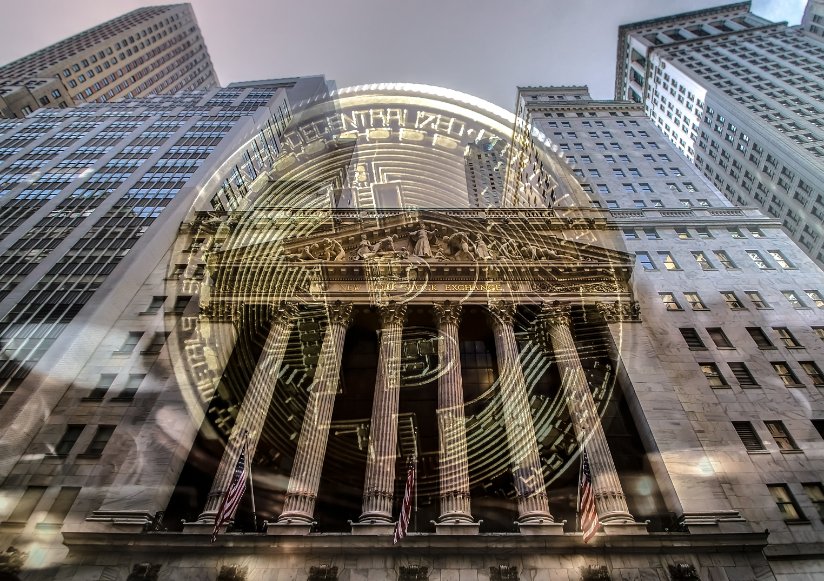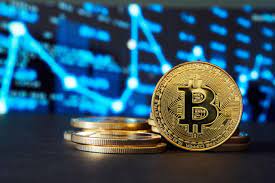It has been a turbulent year in the markets, to say the least.
But one thing that I think is both bearish and bullish is the relationship between Bitcoin And this Share Market, It sounds strange, but let me explain.
Are you looking for fast-news, hot-tips and market analysis? Sign-up for the Invez newsletter today.
The bull case for bitcoin is to break away from the stock market
Many bitcoiners believe that it is only a matter of time before bitcoin breaks off from the stock market, spreading its wings and claiming the title “hedge” that has been so elusive until now.
Without a doubt, it’s the reverse – bitcoin’s hard supply cap, bypassing government controls, and its unique ability to separate money and state means that the bull vision is tantalizing.
But, judging by the data, the correlation between bitcoin and the stock market is as high as it has ever been; This utopian (or dystopian, depending on your views!) future has never looked further than this. In fact, I’ve plotted the correlation from the beginning of the year to now, and the results are telling (for nerds, my choice of metric was the Pearson 6-month rolling coefficient).
For those less familiar with correlation, a coefficient of 0 means no correlation. For example, the relationship between how many apples you eat on any given day and how often you eat them UK Prime Minister Liz Truss changed her mind (probably) close to zero.
On the other hand, the relation between 1 is perfect. So, the relationship between how many pints you drink and how drunk you are will be close to +1. And it also follows that -1 is an entirely negative relationship, so the relationship between the number of pints you drink and how sober you are is probably closer to -1.
The closer the number is to 1, the stronger the relationship will be. The closer to -1, the stronger the relationship in the opposite direction. And zero, or somewhere close to it, means there is no meaningful relationship. So, it is a sliding scale between -1 and 1.
Let’s look at the graph of bitcoin’s correlation with the stock market, zooming in on the 2022 time frame.
The correlation between bitcoin and the stock market has never been higher
It is immediately clear that the correlation jumped massively in late January/February, before increasing even more in April. In fact, it has been close to perfect 1 for a lot of the year, with the market moving in lockstep.
And what is special this year? Well, it’s the interest rate environment. The Federal Reserve has taken the markets for a spin with its aggressive stance on interest rates. Higher interest rates are raised, more liquidity is sucked out of the economy and things get more bearish. Too much hiking and we get the R-word: recession.
The Fed has introduced a new paradigm, such as inflation Money has spiraled on the back of a decade of printing, quantitative easing and near-zero rates. With COVID taking all this to a whole new level, inflation has skyrocketed. Cite a hike in interest rates as the Fed scrambles to rein in inflation.
So let me add a variable to the previous graph that shows the climbing relationship between bitcoin and the stock market. Take a look at the rolling correlation with the Fed rate:
Hmm. And remember – bitcoin was only launched in 2009, the year bankers lost the plot after the world economy thawed, with a subprime mortgage crisis in the US being one of the worst financial crises of all time. . Since those dark days, the market has come to a complete tear, experiencing one of the longest bull markets in history. This has been an era of thin interest rates (negative?) and quantitative easing, in which outrageous asset gains have been layered.
COVID was the same thing, only on steroids. Below is one of the most revealing graphs – from my analysis of money printing and inequality published yesterday,
And then also the graph below, which shows the scale of the stimulus compared to 2008. It’s like comparing an apple to a genetically modified, grown orange.
In this context, it makes perfect sense that the correlation is so high. COVID flooded the entire system with cash, and then came inflation. Now, the Fed is intent on taking back all that stuff — the worst news for the markets.
Jerome Powell’s word really matters right now (I spoke recently about the market’s dependence on it) Here) the market reacts based on expectations of future interest rate hikes, which come from Powell’s mouth, as well as monthly CPI reports.
And what is the old saying? Well, in peril the correlations become 1. Investors rush for the safest asset, dumping anything and everything for liquidity. In fact, this is one of the primary reasons behind the tremendous strength of the dollar this year. something I analyzed earlier this year, It is all interconnected.
Given that analysis of the dollar’s strength earlier this year, my favorite chart below is plotting historically the strength of the dollar and highlighting times of crisis. notice anything?
Bitcoin’s First Crisis
Again, nothing surprising here:
step 1: Unprecedented money printing. Assets Moon, with those on the further risk spectrum (technical stockbitcoin, dogecoin etc.) to see more profit.
step 2: As a result inflation rises
step 3: Federal Reserve adopts aggressive interest rate policy to curb inflation
step 4: Assets get sold, which further sees more losses on the risk spectrum (tech stocks, bitcoin, dogecoin etc.).
And – importantly – sellers do not discriminate. Selling is broad, so the correlation increases, which we are seeing with bitcoin. This does not necessarily mean that the stock market is leading bitcoin; It’s that there’s a latent variable — the Federal Reserve — leading them both. Again, look at the chart above, which shows the Fed rate against the correlation between the S&P 500 and Bitcoin.
And that’s why I’ve been pounding my head against the table (is that an expression?) all year long about a fallacy: the claim that crypto and bitcoin have been here before. Proponents argue that this is only the latest of many downfalls for crypto.
That is not true. Bitcoin was launched in January 2009, which means it first existed during a macro bear market. The last crypto winter came amid a low interest rate, favorable environment where everything was good in the world.
Today it is expected that there will be power cuts on cold winter nights in London this winter. Big tech companies have cut their share prices by more than 70%. People are struggling for milk and bread. So no, crypto hasn’t been here before. It is a dark time financially. And crypto has never seen dark times before.
what happens next?
It’s not me saying crypto won’t do what it always has – bounce back. All I’m saying is that this isn’t your friendly neighborhood crypto winter, it’s a different beast altogether – driven by the macro bloodbath, the correlation is rising accordingly.
Let me go back to the opening paragraph of this piece, when I said that bitcoin’s rising correlation was both bullish and bearish.
Long term, bitcoin will have to be isolated to achieve its “goals” of becoming a store of value; Getting out of a government-controlled world of fiat money. It’s hard to argue with this. And in that sense it is disappointing to see its sky-high correlation, which has increased so much this year. Certainly, bitcoin will have zero hope in the long run if it doesn’t give up this nasty volatility habit, as well as refuse to do anything without holding the stock market’s hand.
The reason I say this is also a bit bullish, indicating that bitcoin is now a mainstream financial asset. In previous years a bitcoin was displayed that was not highly correlated with the market. It was a dull magical money thing on the internet, something your friend’s older brother told you about barbecue.
Liquidity was sparse and did not affect the broader financial market.
But now, it has arrived. Adoption has accelerated. It is presented alongside the Dow Jones and gold when media outlets show daily market movers. The correlation backs it up – it’s moving with the stock market more than ever.
The next step is dumping that correlation. And given the fundamentals of bitcoin, which are more like a commodity than an equity (unlike ethereum, incidentally), she has the makeup on to make it happen. The real question is whether people will realize it and start to value it that way.
And that’s what makes it so attractive as an asset class. We’ve never seen anything like this before – a one-of-a-kind object living in a digital world. This is why the range of its consequences is arguably wider than that of any other asset.
If anything, it will be a fun ride. But statistics show that right now, bitcoin is nothing more than a stock market toy, being tossed at will.
Invest in top cryptocurrencies quickly and easily with the world’s largest and most trusted broker, eToro,
10/10
68% of retail CFD accounts lose money















